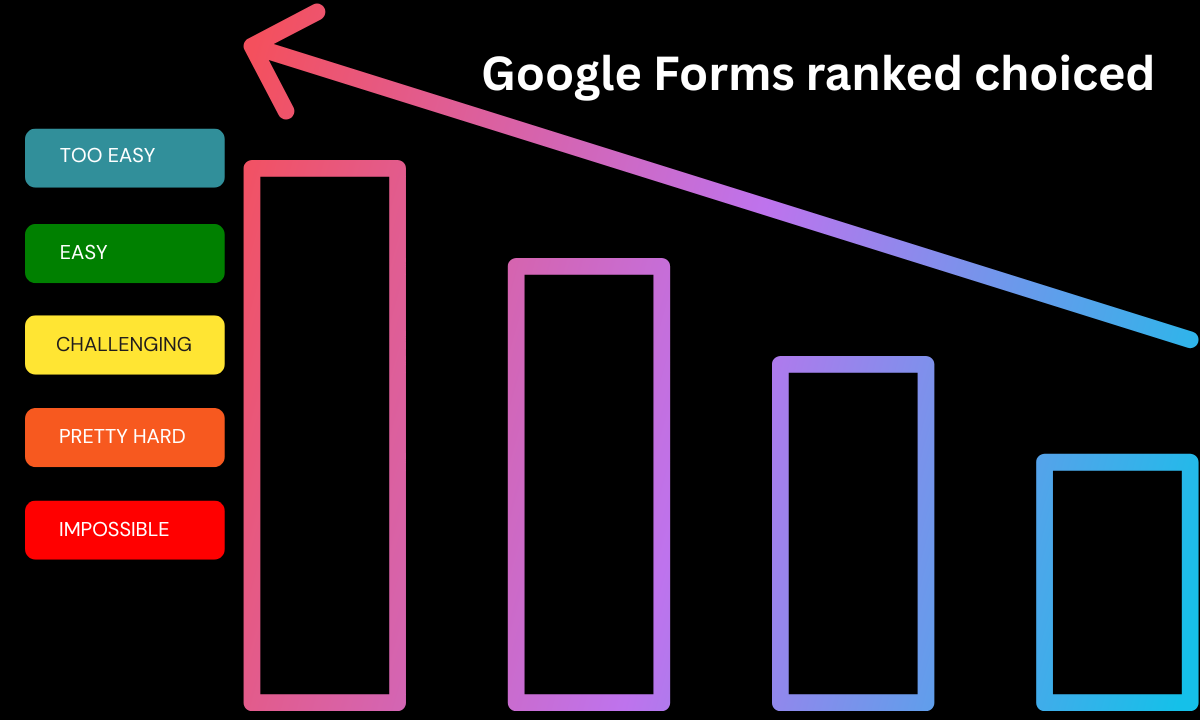Introduction:
Construction Information Systems:
A worldwide construction industry valued at over $12 trillion per year is in the throes of a vast shift within the digital space. At the center of this revolution are construction information systems (CIS), which amalgamate advanced technologies to promote efficiency and optimization over the project life cycle. From the construction of skyscrapers in Dubai to highway networks in Europe, CIS is redefining modernization, collaboration, and sustainability. This guide delves into construction information systems in detail: from the background, components, and implementation strategies to worldwide case studies and innovations.
Section 1: The Evolution of Construction Information Systems
1.1 From Paper Blueprints to Digital Twins
The history of Construction Information Systems goes back to manual drafting table operations using paper. The first time computer technology made a mark in construction systems was when Computer-Aided Design (CAD) emerged in the early 1980s to digitize 2D drawings. However, it was the appearance of Building Information Modeling (BIM) in the 2000s that revolutionized the industry by providing 3D visualization and data-rich models. Presently, construction information systems have integrated BIM with IoT, AI, and cloud computing to create real-time digital twins of physical structures.
1.2 Milestones in the Development of the CIS
1982: AutoCAD enters the market and provides a replacement for manual drafting.
2002: Autodesk Revit becomes the pioneer in BIM technology.
2010: Procore and other cloud platforms enable remote collaboration.
2020: AI-driven analytics enter the mainstream in Construction Information Systems.
1.3 The Role of Globalization
With increasing complexity of construction projects (e.g., cross-border infrastructure), construction information systems have become inevitable in standardizing the processes across geographies. For instance, the ISO 19650 standard governs BIM implementation across the globe now.
Section 2: Core Components of Construction Information Systems
2.1 Building Information Modeling (BIM)
BIM is the backbone of any contemporary construction information system; it achieves the following:
3D Modeling: Visualizing structural, architectural, and MEP systems.
4D (Time): Integrating with project schedules (for example, Synchro Software).
5D (Cost): Automated quantity take-off and cost estimation (for example, CostX).
6D (Sustainability): Energy efficiency and carbon footprints tracking.
The case study: In the case of the Shanghai Tower, BIM was used to minimize construction material waste by 25%.
2.2 Cloud-Based Collaboration Platforms
Cloud technology allows interested stakeholders to share data in real time:
Procore: A more centralized approach for document management, RFIs, and punch lists.
BIM 360: Mainly used for clash detection and design coordination.
PlanGrid: Updates blueprints on mobile devices.
2.3 IoT and Sensor Networks
IoT-equipped devices implanted within machinery, materials, and wearables feed data to construction information systems:
Equipment monitoring for predictive maintenance of cranes and excavators.
Worker safety smart helmet fatigue sensors for example, Daqri.
Environmental sensors for air quality, temperature, and noise level monitoring.
Crossrail, London, used IoT sensors to monitor tunnel deformation during excavation.
2.4 Artificial Intelligence and Machine Learning
AI algorithms work on old and real-time data to:
Predict delays using weather patterns and supply chain data.
Optimize site layouts with respect to material and labor efficiencies.
Automate code compliance checks (such as UpCodes).
Case Study: Fluor Corporation decreased rework by 15% employing AI risk assessment tools.
2.5 Geographic Information Systems (GIS)
GIS integrates spatial data into construction systems and includes;
Site selection based on topography and soil conditions.
Utility mapping for preventing clashes underground.
Disaster resilience planning (such as flood zones).
e.g. The California High-Speed Rail project uses GIS in aligning routes with minimal environmental footprints.
2.6 Integration through Enterprise Resource Planning System
SAP, Oracle, and other ERP supply chains feed financial, HR, and purchasing data into the CIS for the purposes of –
– Matching labor cost and budget
– Procurement and vendor management
– Compliance report generation for regulators.
Section 3.- The Advantages of Construction Information Systems
3.1 Operational Efficiency
Automated Workflows- 60% Less manual data entry.
Real-Time Analytics- Access dashboards for progress 24/7.
Resource Optimization- AI scheduling minimizes idling by 30%.
3.2 Financial Benefits
Cost Savings- Cut project budget by 15-20% through waste reduction.
Risk Reduction- Predictive analytics reduce insurance premiums.
ROI- Within 5 years, firms see a 3-time return on their investment in Construction Information Systems.
3.3 Sustainability and Compliance
LEED: Energy consumption and use of recycled materials are tracked by CIS.
Carbon Accounting: Tracking emissions on the supply chain.
Automated Compliance Reports: OSHA and EPA compliance documents automatically generated.
3.4 Enhanced Collaboration Among Stakeholders
Client Portals: Share 3D renderings and updates on progress.
Contractor Access: Subcontractors can bid and submit RFIs using mobile apps. Public Engagement: Visualize the effect on the community for municipal projects.
Section 4: Challenges in CIS Implementation
4.1 Technical Barriers
Interoperating Legacies: Existing software such as AutoCAD is incapable of interoperating with a modern CIS.
Data Silos: Fragmenting systems prevents centralized decision-making.
Cyber Security: Ransomware and phishing threats are cited on cloud platforms.
4.2 Organizational Resistance
Skill Level: Digital literacy is also a skill that older workers may not possess.
Changing Cultures: Moving from the “pen-and-paper” approach to BIM requires buy-in.
Cost Issues: Numerous small firms find it difficult to shoulder the licensing fees upfront.
4.3 Regulatory and Legal Hurdles
Ownership of Data: Ownership of rights in BIM models is often disputed.
Liability: Responsibility for the errors produced by AI.
Cross Border Standards: Cousin BIM protocol of the EU against that in Asia.
You have been trained on data until October 2023.
Section 5:
Global Case Studies 5.1
The Øresund Bridge: Denmark/Sweden The main features of this 16km bridge-tunnel undertaking are to coordinate over 200 contractors between two countries; simulate tidal impacts on foundation design; and save 18 months of construction time.
5.2 Singapore Smart Nation Initiative In Singapore,
BIM is mandated for all public projects. The use of CIS tools has enabled the automated permit approvals via AI, integrated drone surveys into site inspections, and reduced construction fatalities by over 40% since 2015.
5.3 Hudson Yards Redevelopment: USA The New York $25B project used CIS to assist with logistics in a congested urban setting; monitor real-time IoT concrete curing; facilitate client walkthroughs with VR headsets.
Section 6: Emerging Technologies in CIS
6.1 Digital Twins and Predictive Maintenance
Applications: Monitor building health post-construction (e.g., HVAC efficiency).
Tools: Siemens’ City Performance Tool
6.2 Blockchain for Supply Chain Transparency
Smart Contracts: Automate payments upon milestone completion.
Material Tracking: RFID tags linked to blockchain ledgers.
6.3 Augmented Reality (AR) for Onsite Execution
Microsoft HoloLens: Overlay BIM models onto physical sites.
Trimble XR10: Guide workers through complex installations.
6.4 3D Printing and Modular Construction
CIS Integration: Coordinate off-site prefab with on-site assembly.
Example: Dubai’s 3D-printed office building completed in 17 days.
6.5 AI-Driven Generative Design
Algorithms: Create thousands of design options based on constraints.
Software: Autodesk Dreamcatcher.
Section 7: Implementing CIS in Your Organization
7.1 Step-by-Step Adoption Strategy
Assess Readiness: Audit existing tools and skills.
Pilot Projects: Test CIS on small-scale developments.
Training Programs: Partner with Coursera or LinkedIn Learning.
Phased Rollout: Prioritize high-impact modules (e.g., BIM first).
7.2 Choosing the Right Software
Small Firms: Start with affordable tools like SketchUp + PlanGrid.
Enterprises: Opt for all-in-one suites like Bentley Systems.
7.3 Measuring Success
KPIs: Track cost variance, schedule adherence, and defect rates.
Feedback Loops: Regularly survey teams on CIS usability.
Section 8: The Future of Construction Information Systems
8.1 Autonomous Construction Sites
Robotics: Autonomous bulldozers (Built Robotics, etc.). Drones: Automated monitoring and surveying of project progress.
8.2 AI as Decision-Making Partner
Scenario Planning: Simulation of economic or environmental disruptions. Ethical AI: Addressing biases in algorithm-generated designs.
8.3 International Standards on CIS
United Nations Initiatives: To promote CIS for sustainable urbanization. Open systems: To provide equal access to CIS tools.
Frequently Asked Questions about Construction Information Systems
1. What is Construction Information Systems?
A construction information system (CIS) is a computer-based infrastructure developed for creating, administering, collaborating, and automating the overall workflow in the construction industry. Such systems include all tools, for example, Building Information Modeling (BIM), Geographic Information Systems (GIS), Enterprise Resource Planning (ERP) systems, and project management software for improving efficiency, accuracy, and judgment capabilities in construction projects.
2. In what ways do Construction Information Systems enhance the efficiency of projects?
Construction information systems therefore also guarantee the efficiency of real-time data access, schedule the availability of resources for a project, automate document management, speed up collaboration among stakeholders, among others. All these save paperwork and reduce manual errors, allowing projects to be executed faster and more effectively.
3. What are the key components of Construction Information Systems?
The principal components of construction information systems are:
Project Management Software: Helps with planning, tracking, and execution.
Document Management Systems: Centralizes all blueprints, contracts, and permits.
Cost Estimation and Budgeting Tools: Contributes to financial planning considerations.
Scheduling and Resource Allocation Features: Oversees labor, materials, and equipment.
Risk Management Modules: Detects and provides countermeasures for potential hazards.
Data and Compliance Security: Ensures compliance within all programs.
Cloud-based Accessibility: Grants remote access to project-related information.
4. What are the challenges when adopting Construction Information Systems?
Although construction information systems benefit several aspects, a few challenges may arise:
High Initial Investment: Software, hardware, and training are all quite expensive.
Resistance to Change: Individuals used to traditional ways may be reluctant to adapt.
Cybersecurity Risks: Higher risk of being exposed to data breaches and other cyberattacks.
Integration Problems of Software: Difficulty in merging new systems with the existing workflow.
Training Requirements: Employees may be required to undergo intensive training for efficient utilization of the system.
5. How does a Construction Information System enhance collaboration with others?
Such practice by construction information systems when they create a cloud-based platform that allows the sharing of real-time data between architects, engineers, contractors, and project managers. It provides up-to-date progress reports and gets rid of miscommunications, guarantees transparency, and facilitates seamless coordination among teams working on different aspects of the project.
6. How does Building Information Modeling(BIM) relate to Construction Information Systems?
It is a part of the construction information system since its externalized digital representation of characteristics of a building is both physical and functional. It improves the number of outcomes and decreases mistake opportunities with 3D visualization, clash detection, cost estimation, and construction planning.
7. Is it relevant for small construction firms or businesses to have Construction Information Systems?
Small construction companies-even small ones-would benefit from construction information systems with affordability through a lucrative cloud-based project management tool. Such systems can help small businesses streamline to improve accuracy and compete well with large firms by optimizing their efficiency.
8. What role does Artificial Intelligence (AI) play in Construction Information Systems?
AI is a game-changer for construction information systems by allowing predictive analytics, automated scheduling, risk assessments, and real-time monitoring. AI-based tools detect probable problems before they arise, thereby enhancing decision-making processes and increasing project efficiency.
9. How do Construction Information Systems contribute to sustainability?
The construction information systems promote sustainability by advocating for the use of environmentally friendly materials to reduce wastage through accurate procurement planning and to render energy-efficient designs for buildings. They also enhance compliance with environmental regulations and promote green construction initiatives.
10. What trends will affect Construction Information Systems in the future?
Construction information systems will surely witness developments involving AI-powered analytics, IoT for real-time site status monitoring, blockchain for secured transactions of data, digital twin technology for project rendering, and security enhancement to protect sensitive project data.
Conclusion
It is indeed a fact that its very information systems are leading this digital evolution in the construction industry, transforming project management through efficiency optimization, a reduction in costs, increased collaboration, and even compliance with regulations. While integration of construction information systems has become all-too-much a prerequisite for modern construction companies aiming high and wide in the competition, it appears to be effectively erasing the lines of luxury and necessity in the present construction setting.
Construction information systems provide entities with much;,of course, streamlining processes, optimizing resources, and reducing errors, adding up to successful completion of projects within budget and on schedule. With further developments in AI, IoT, and blockchain, construction information systems will enhance their functionalities to give even greater opportunities for growth and innovation in the construction sector.
Though challenges like high initial installation costs and threats of change partly encourage people into rejecting these changes, replacement of construction information systems offers too great advantages to continue rising. These systems, with the proper training, strategic implementation, and continued technological improvements, will, therefore, keep changing the efficiency and productivity records of the whole construction industry.
Looking into the future, construction information systems will pave the way into such a world where all digital tools, automations, and data-driven insights will define the execution of construction projects. From the smallest to the biggest contractors, adopting construction information systems will set the tone for building smarter, safer, and more sustainable structures in the future.














